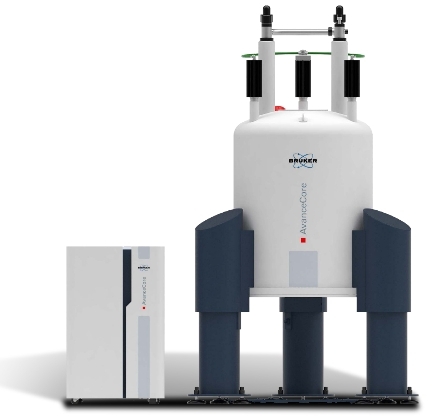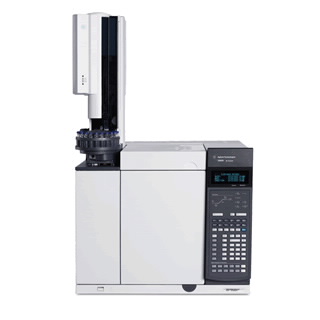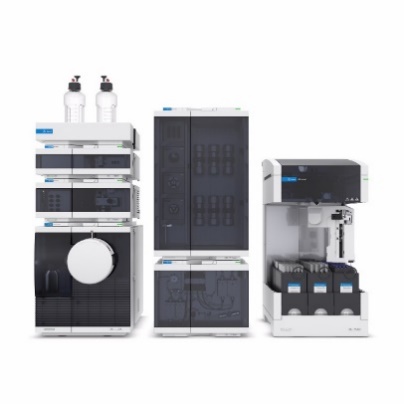What are cembrene?
Cembrene (C20H32) is a macrocyclic diterpene predominantly found in conifer resins, marine corals, and select insect species.
Cembrene serves as a chemical defense molecule, inhibiting microbial growth and deterring herbivores. Beyond its ecological significance, cembrene's stereochemical complexity and metabolic pathways offer insights into terpenoid biosynthesis, making it a critical target for metabolic engineering and bioindustrial applications.
Creative Proteomics delivers cembrene analysis services tailored to accelerate research and industrial workflows.
Cembrene Analysis Service by Creative Proteomics
Creative Proteomics provides a wide range of specialized services for cembrene analysis to ensure high-precision data back your research and development processes. Our service offerings include:
Cembrene ldentification and Quantification
- Targeted GC-MS or LC-MS/Ms analysis for accurate quantification of cembrene.
- Absolute and relative quantification with internal standards.
Metabolite Identification & Pathway Mapping
- Structural elucidation of cembrene derivatives (e.g., cembrene A, iso-cembrene) and oxidation products.
- Pathway analysis via KEGG and MetaCyc databases.
Cembrene Structural Characterization
- High-resolution MS and MS/MS analysis for cembrene structural elucidation.
- Fragmentation pattern analysis to determine molecular structure and confirm identity.
Isotope Tracing Studies
- Combined with mass spectrometry to track the binding of isotopically labelled compounds in metabolic pathways to determine metabolic rates and pathway activity.
Custom Assay Development
- Development and validation of customized cembrene quantification assays.
- Optimization of extraction and sample preparation protocols for diverse sample matrices.
Data Interpretation and Report Generation
- Detailed, scientifically rigorous reports, including all relevant data, trends and analyses.
List of Cembrene-Related Metabolites (including but not limited to)
| Compound |
Structure |
Detection Limit (LOQ) |
Related Pathway |
| Cembrene (C20H32) |
Macrocyclic diterpene |
0.05 ng/g |
Diterpenoid biosynthesis |
| Cembrene A |
Epoxy derivative |
0.1 ng/g |
Oxidative modification |
| Norcembrene |
Degraded metabolite |
0.2 ng/g |
Catabolic pathways |
| Cembranoid precursors |
Linear geranylgeranyl PP |
0.3 ng/g |
Terpenoid backbone synthesis |
Techniques and Instrumentation for Cembrene Analysis
 Bruker 400 MHz NMR spectrometer (Figure from Bruker)
Bruker 400 MHz NMR spectrometer (Figure from Bruker)
 7890B Gas Chromatograph (Figure from Agilent)
7890B Gas Chromatograph (Figure from Agilent)
 Mass-Based 1290 Infinity II Preparative LC/MSD System (Figure from Agilent)
Mass-Based 1290 Infinity II Preparative LC/MSD System (Figure from Agilent)
 Agilent 6495C Triple quadrupole (Figure from Agilent)
Agilent 6495C Triple quadrupole (Figure from Agilent)
Workflow for Cembrene Analysis Service

Why Choose Us?
Our cembrene analysis service provides several compelling advantages that ensure you receive high-quality, reliable, and accurate results:
- Ultra-High Sensitivity: Detection down to sub-nanogram levels, even in complex matrices like resin or biofilm.
- Comprehensive Metabolic Profiling: Our service provides not just a measure of taxadiene but also detailed insights into the entire metabolic pathway leading to its derivatives and final products.
- Speed and Efficiency: Our advanced systems allow for fast processing times, enabling rapid turnaround without compromising quality.
- Scientific Expertise: With over 20 years of experience in biochemical and molecular analysis, our team of experts ensures that your samples are handled with the highest level of scientific integrity.
- Perfect after-sales service: Comprehensive interpretation of the final report, free technical advice, and data review service.
- Comprehensive analyses: 12 analyses, 22 graphical displays.
Applications of Taxadiene Analysis
|

|
Taxonomic Research
Chemotaxonomic markers for coral or conifer species identification.
|

|
Bioindustrial R&D
Optimize microbial chassis for cembrene production (e.g., engineered E. coli).
|
|

|
Pharmacology Research
To explore the value of Cembrene in drug development, especially in the extraction and functional studies of natural drugs.
|

|
Industrial Biotechnology
Screen engineered microbial strains (e.g., E. coli, S. cerevisiae) for cembrene production efficiency.
|
Sample Requirements for Cembrene Analysis Assay
| Sample Types |
Minimum Quantity |
Storage Guidelines |
| Plant resin |
50 mg |
-80°C, avoid light exposure |
| Marine coral tissue |
100 mg |
RNAlater® or flash-frozen |
| Insect exudates |
20 µL |
Dry ice shipment |
| Microbial cultures |
10 mL |
Centrifuged pellet, -20°C |
- Q: Can you handle oxidized/degraded cembrene samples?
- A: Yes - our protocols include antioxidant stabilizers (e.g., BHT) and inert atmosphere processing.
- Q: What software is used for data analysis?
- A: Compound Discoverer™ 3.3 for untargeted metabolomics; TraceFinder™ 5.1 for quantification.
- Q: Is there a bulk discount for large-scale studies?
- A: Projects exceeding 50 samples qualify for a 15% volume discount.
- Q: Do you provide statistical analysis?
- A: Yes-PCA, PLS-DA, and ANOVA included in premium packages.
- Q: How are low-abundance samples processed?
- A: Solid-phase microextraction (SPME) or derivatization to enhance detectability.
- Q: Can I request raw data files?
- A: Raw files (.RAW, .D) are available via secure cloud download.
 Total ion chromatogram (TIC) of essential oil from Euphorbia mauritanica, showing relative abundance versus retention time (0.00 to 62.02 minutes). Five major peaks are labeled: 1 (alpha-Pinene), 2 (Limonene), 3 (Eucalyptol), 4 ((3E)-Cembrene A), and 5 (Verticiol).
Total ion chromatogram (TIC) of essential oil from Euphorbia mauritanica, showing relative abundance versus retention time (0.00 to 62.02 minutes). Five major peaks are labeled: 1 (alpha-Pinene), 2 (Limonene), 3 (Eucalyptol), 4 ((3E)-Cembrene A), and 5 (Verticiol).
 Total ion current (TIC) chromatograms of leaves and roots in the positive-ion modes annotated with identified metabolites (3, 4, 5, 8, 9, 11, 12, 14, 15, 17, 20, 23 and 24), including corresponding structure, retention time (RT), and mass to charge ratio (m/z). (Figure from Jiadong Hu et al., 2022)
Total ion current (TIC) chromatograms of leaves and roots in the positive-ion modes annotated with identified metabolites (3, 4, 5, 8, 9, 11, 12, 14, 15, 17, 20, 23 and 24), including corresponding structure, retention time (RT), and mass to charge ratio (m/z). (Figure from Jiadong Hu et al., 2022)
Case. Unveiling the spatial distribution and molecular mechanisms of terpenoid biosynthesis in Salvia miltiorrhiza and S. grandifolia using multi-omics and DESI-MSI
Background:
- Salvia miltiorrhiza and S. grandifolia are rich in diterpenoids and have important economic and medicinal values.
- The study analyzed the spatial distribution of diterpenoids in two plants using a combination of metabolomics and mass spectrometry imaging techniques, laying the foundation for further research on diterpenoid biosynthesis in plant synthetic biology
Samples:
- Different tissues of S. miltiorrhiza and S. grandifolia
- Three biological replicates were included for each line, with six plants for each biological replicate
Technical methods procedure and results
 Technology Roadmap
Technology Roadmap
 Spatial distribution of diterpenoid biosynthetic pathways in S. miltiorrhiza and S. grandifolia roots
Spatial distribution of diterpenoid biosynthetic pathways in S. miltiorrhiza and S. grandifolia roots
Reference
- Jie Xia, et al. Unveiling the spatial distribution and molecular mechanisms of terpenoid biosynthesis in Salvia miltiorrhiza and S. grandifolia using multi-omics and DESI – MSI. Horticulture Research 10.7 (2023): 109. https://doi.org/10.1093/hr/uhad109


 Bruker 400 MHz NMR spectrometer (Figure from Bruker)
Bruker 400 MHz NMR spectrometer (Figure from Bruker) 7890B Gas Chromatograph (Figure from Agilent)
7890B Gas Chromatograph (Figure from Agilent) Mass-Based 1290 Infinity II Preparative LC/MSD System (Figure from Agilent)
Mass-Based 1290 Infinity II Preparative LC/MSD System (Figure from Agilent) Agilent 6495C Triple quadrupole (Figure from Agilent)
Agilent 6495C Triple quadrupole (Figure from Agilent)




 Total ion chromatogram (TIC) of essential oil from Euphorbia mauritanica, showing relative abundance versus retention time (0.00 to 62.02 minutes). Five major peaks are labeled: 1 (alpha-Pinene), 2 (Limonene), 3 (Eucalyptol), 4 ((3E)-Cembrene A), and 5 (Verticiol).
Total ion chromatogram (TIC) of essential oil from Euphorbia mauritanica, showing relative abundance versus retention time (0.00 to 62.02 minutes). Five major peaks are labeled: 1 (alpha-Pinene), 2 (Limonene), 3 (Eucalyptol), 4 ((3E)-Cembrene A), and 5 (Verticiol). Total ion current (TIC) chromatograms of leaves and roots in the positive-ion modes annotated with identified metabolites (3, 4, 5, 8, 9, 11, 12, 14, 15, 17, 20, 23 and 24), including corresponding structure, retention time (RT), and mass to charge ratio (m/z). (Figure from Jiadong Hu et al., 2022)
Total ion current (TIC) chromatograms of leaves and roots in the positive-ion modes annotated with identified metabolites (3, 4, 5, 8, 9, 11, 12, 14, 15, 17, 20, 23 and 24), including corresponding structure, retention time (RT), and mass to charge ratio (m/z). (Figure from Jiadong Hu et al., 2022) Technology Roadmap
Technology Roadmap Spatial distribution of diterpenoid biosynthetic pathways in S. miltiorrhiza and S. grandifolia roots
Spatial distribution of diterpenoid biosynthetic pathways in S. miltiorrhiza and S. grandifolia roots

